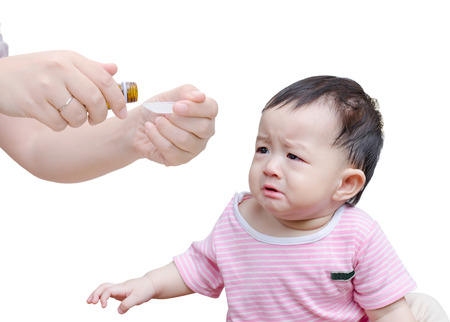Studies show that antibiotics and C-sections affect babies’ microbiomes
From GenomeWeb.com:
In an attempt to look at how an infant’s microbiome develops and changes, two groups of researchers sequenced the microbiomes of more than 80 infants at various time points over their first two years of life, identifying changes between the bacterial makeup that occurred as a result of delivery, antibiotic exposures, and other environmental factors.
The studies, published today in Science Translational Medicine, are a first step toward understanding the relationships between an infant’s microbiome and health.
 Ramnik Xavier, chief of Massachusetts General Hospital’s gastrointestinal unit and a senior author of one of the studies, said in a statement that the goal of the study was to better understand the relationship between gut microbiome diversity and health. “The microbial population of early childhood appears to be critical to human health, in that decreased diversity of the gut microbiome has been implicated in a number of allergic and autoimmune diseases,” he said.
Ramnik Xavier, chief of Massachusetts General Hospital’s gastrointestinal unit and a senior author of one of the studies, said in a statement that the goal of the study was to better understand the relationship between gut microbiome diversity and health. “The microbial population of early childhood appears to be critical to human health, in that decreased diversity of the gut microbiome has been implicated in a number of allergic and autoimmune diseases,” he said.
In the MGH and Broad Institute-led study, researchers collected stool samples and clinical information from 39 infants over their first three years of life. Four children were delivered via Caesarean section, while the remainder were born vaginally. Twenty children received between nine and 15 antibiotic treatments during that time, while 19 children received no antibiotics.
The researchers performed 16S ribosomal RNA gene sequencing on all 1,069 samples, an average of 28 samples per child, to analyze microbial diversity and then whole-genome shotgun sequencing on a subset of those samples. They also collected clinical data, including mode of delivery, whether the baby was breast fed, the infant’s diet, and antibiotic treatment.
Of the children who received antibiotics, 91 percent were prescribed them to treat ear infections while 6 percent took them for respiratory infections.
An analysis of the 16S rRNA sequence data from all 1,069 samples identified 142 microbial genera, 36 of which comprised more than 1 percent of at least 25 samples. They then chose 240 samples for whole-genome sequencing.
The group found some similarities across all individuals. First, nearly all infants had high levels of Enterobacteriaceae, Bifidobacteriaceae, and Clostridiaceae at two months of age, which comprised 25 percent, 15 percent, and 8 percent of the total. As the infants grew, those numbers dropped in the majority of infants to an average of 1 percent, 3 percent, and 2.5 percent, respectively. By contrast, bacterial strains from the Lachnospirae and Ruminococcaceae families were barely present at two months, but increased during the first year to 12 percent and 20 percent abundance, respectively.
In addition, the children who were born via C-section had a clear lack of species from the Bacteroides genus, compared to vaginally born children. Surprisingly, seven children who were born vaginally also had this low Bacteroides signature. Perhaps the most significant finding, however, was the impact of antibiotics on gut microbiome composition. In general, they found that the children who had taken antibiotics had significantly less microbial diversity than those who had not. A number of samples were dominated primarily by one strain after taking antibiotics. In addition, the microbiomes of the kids who had taken antibiotics were less stable than those who had not.
The researchers also looked at the prevalence of antibiotic-resistance genes, and found that in some cases the number of antibiotic genes rose quickly during antibiotic treatment and then fell afterwards. For example, in one case a child who was treated with penicillin at five months had a sharp increase in a Klebsiella pneumoniae beta-lactamase gene as well as an increase in the abundance of K. pneumoniae from zero to 22 percent. In the month after treatment was stopped, however, levels of both the microbe and the gene fell back to zero.
In other cases, however, the researchers found that antibiotic-resistance gene levels did not drop after treatment. Some children also harbored antibiotic-resistant genes before they had even received antibiotic treatment.
The second study, also published today in Science Translational Medicine, came to similar conclusions about the impact of antibiotics on infants’ gut microbiomes and also found significant differences between infants’ microbiomes based on their mode of delivery and whether they were predominantly breast fed or formula fed.
Researchers in Martin Blaser’s lab at New York University led the study, which evaluated the microbiomes of 43 infants from birth through two years of age. Like the MGH/Broad study, the researchers found similar patterns of microbial composition in the infants immediately after birth, which then changed over time. Of the 43 infants, 23 received antibiotics within the first two years of life. Of those, 13 were delivered via C-section and 12 delivered vaginally.
The researchers found that the infants who received antibiotics tended to have fewer bacteria from the Lachnospiraceae, Enterobacteriaceae, and Erysipelotrichaceae families, and that those infants had gut microbes that were “less developed.” The “antibiotic exposures effectively stall the development of the intestinal microbiome” in these infants, the authors wrote.
The researchers noted that a next step would be to study how these changes in infants’ gut microbiomes may or may not be related to health outcomes.
______________
Read the full media article on GenomeWeb
Read Dr. Xavier’s paper Natural history of the infant gut microbiome and impact of antibiotic treatment on bacterial strain diversity and stability in Science Transational Medicine
Read Dr. Blaser’s paper Antibiotics, birth mode, and diet shape microbiome maturation during early life in Science Transational Medicine
